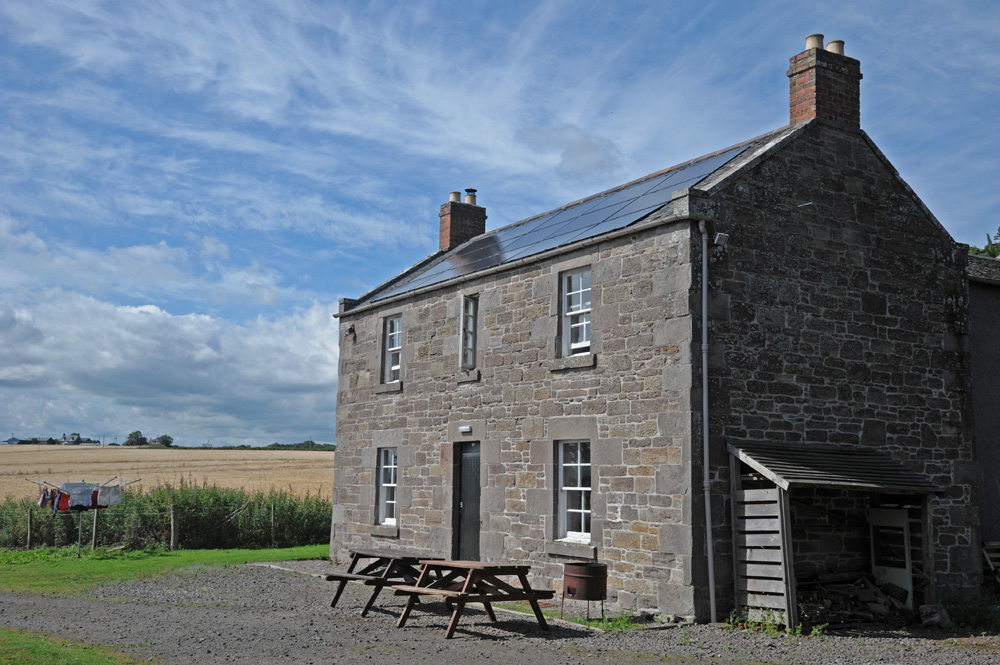
Image: STA Scotland.
The Scottish arm of the Solar Trade Association (STA) has expressed disappointment at the lack of measures to promote solar PV deployment in the Scottish Energy Strategy and has called for a dedicated solar strategy.
Scotland’s first energy strategy was published yesterday (20 December) and lays out the future of the nation’s energy policy focusing on three key principles – a whole system view, an inclusive energy transition, and a smarter local energy model.
Within this sit six key principles, which include championing Scotland’s renewable energy potential. And while the Scottish government has pledged to deliver a route to market for onshore wind, no such efforts are to be made for solar.
Instead, it will use a forthcoming review of energy standards within Building Regulations and the next National Planning Framework to “consider the role for solar and other renewable technologies”.
This will include looking at the potential to expand permitted development (PD) rights for certain renewable installations (removing the need to apply for planning permission for certain developments.
However, STA Scotland has said solar and its ability to play a role in achieving the three central principles of the new strategy is not given due recognition or sufficient practical policy support in the document.
STA Scotland Chair Chris Clark said: “Whilst the Scottish government recognises that solar has a role to play within the new Energy Strategy, it is disappointing that we are still missing the firm policy measures we need to boost the Scottish solar market.
“The solar industry in Scotland is still in its infancy and the synergy solar provides with other technologies and smart systems, means this technology needs more prominence in the Scottish Government’s energy strategy. That is particularly the case if Scotland is to reach the target of 50% energy from renewables by 2030.
“It is within the Scottish government’s gift to boost solar and to empower communities all over Scotland with clean energy. Too many key policy decisions for solar are being kicked into the long grass when action is needed today, so we look forward to working with the government to expedite progress.”
The organisation is calling for Solar Action Plan similar to that published by London’s mayor Sadiq Khan, which like Scotland has an extremely low concentration of solar in the UK – less than 0.5GW of solar is thought to have been deployed in Scotland.
This is despite several pronouncements in recent years from the ruling party, the Scottish National Party (SNP), that solar would be set for a bright future under its policies. In 2015 Scottish energy minister Fergus Ewing said his government was “actively seeking to encourage greater deployment of solar”.
This followed a consultation to review permitted development rights for solar installed on commercial property, with a view to removing the current 50kWp cap.
Two years later, the Scottish government has yet to confirm the plans despite the rest of the UK allowing up to 1MW rooftop systems to be installed on commercial properties without planning permission – a measure STA Scotland would like addressed.
The association is also calling for a route to market for large-scale solar similar to that proposed for wind; a review of Building Regulations to reflect those of the European Union require buildings to consume nearly zero energy by 2020; and an exemption for solar from Scottish business rates.
“We need to maximise the potential for solar across all markets, especially on all suitable roofs of newly constructed buildings,” Clark added.
While these measures have largely been dismissed by the UK government, the industry has expected more from the SNP led government, particularly following the 2016 election campaign when then energy and climate change spokesman Callum McCaig had said “there will be a huge opportunity for solar deployment”.
Despite the lacking follow-up on such comments, Scottish solar activity is beginning to increase particularly in the new build housing sector where planning conditions often mean house-builders automatically include solar in new developments.
Some large scale projects are also beginning to emerge with plans for a 50MW site recently approved.

